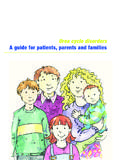Transcription of Creative Play Therapy Interventions for Children …
1 Creative play Therapy Interventions for Children and families By Liana Lowenstein, MSW, CPT-S. When Children are referred for Therapy , they typically feel anxious and are reluctant to talk directly about their thoughts and feelings. But activities that are Creative and play -based can engage Children and help them to safely express themselves. The purpose of this article is to provide therapists with Creative Interventions to engage, assess and treat Children , youth and families . The Interventions presented in this article aim to capture and sustain Children 's interest and motivation in Therapy , while helping them express themselves within the context of a safe therapeutic environment.
2 In using these Interventions , the following guidelines should be considered: Have a strong theoretical foundation: Therapists should be well grounded in their theoretical orientation before using any activities in Therapy sessions. Interventions should not be used indiscriminately or in a manner that ignores clinical theory. The activities in this article can be integrated into any theoretical orientation that uses a directive play Therapy approach. Build and maintain a positive therapeutic rapport: Regardless of the activity being used, the therapist-client relationship is central to the client's realization of treatment goals.
3 Because the rapport that develops between therapist and client forms the foundation for therapeutic success, the therapist must create an atmosphere of safety in which the client is made to feel accepted, understood and respected. Use Interventions that are appropriate for each client: Consider the child's developmental capacities to ensure that the selected activity is appropriate. Select activities that fit the client's treatment goals. Pacing is also important. Consider the client's level of engagement in Therapy and degree of defensiveness before implementing activities that are more emotionally intense.
4 Introduce, process and bring closure to each activity: When implementing an activity, first consider how it will be introduced to the client. The therapist's enthusiasm, creativity and overall style are key factors in determining whether the client will become interested and engaged in the activity. The purpose of the activity should be outlined and the instructions clearly explained. Interventions should be carefully processed and used as a point of departure for further exploration. When the activity has been completed and sufficiently processed, the therapist should bring closure to the activity.
5 2. Interventions Pin the tail on the Donkey (Adapted from Lowenstein, 1999). Purchase a Pin the Tail on the Donkey Game (available at toy or party stores). and cover any reference to "Happy Birthday" on the game. Tape the game to a smooth wall at a height that all the Children in the group can reach. Write questions on index cards, such as: (1) What's your favorite movie? (2) What's one of your favorite toys? (3) What's something that makes you happy? Describe the game as follows: One person is chosen to go first.
6 This player is given a cardboard tail with a piece of tape attached to it (the game should come with these tails.) The player closes his or her eyes, the leader spins the player around twice, and faces the player toward the Donkey Game. The player walks up to the game and sticks the tail onto the picture. The tail must be taped to the first place it touches. If a player misses the tail on the picture, then that player must pick a question card from the stack of index cards and answer the question (the leader can read the question aloud to the group).
7 Once that player answers the question, the other group members have a turn to answer the same question. If the player gets the tail on the donkey, then instead of drawing a question card, that player gets to hand out treats from the treat bag to all the players. The next player then has a turn, and so on, until all the group members have had a turn. The game continues until all of the questions have been answered.. During the activity, there is ample opportunity to gather assessment information, observe group dynamics, and enhance peer interaction skills.
8 Can You Kazoo? (Chalker, 2010). The therapist and child each choose a kazoo. The therapist hums a rhythm or tune on one kazoo and the child tries to repeat it. If the child repeats it correctly, he/she chooses a treat or sticker. Then the client hums a rhythm or tune on his/her kazoo. The therapist repeats it correctly and chooses a treat or sticker. The therapist starts out with simple rhythms and increases the complexity as the child becomes more adept at repeating them. The therapist sets a number of turns for each person or lets the child decide when to end the game.
9 Children are often shy or anxious and have difficulty interacting with the therapist. This activity engages the child and helps build a playful and trusting relationship without requiring the child to talk. The added incentive of choosing a reward encourages the child's interest in the game. Butterflies in My Stomach (Lowenstein, 1999). The therapist introduces the activity by pointing out that everyone has problems and worries. Different ways the body reacts to stress are outlined. For example, when people are scared, their heart might pound faster, or when they are sad and about to cry, they might feel like they have a lump in their throat.
10 3. The therapist then asks the client if he or she has ever heard of the expression I. have butterflies in my stomach. If the client is unfamiliar with the expression, the therapist offers an explanation, such as, When you are worried or nervous about something, your stomach might feel funny or jittery, as if you have butterflies in your stomach. You don't really have butterflies in your stomach; it just feels like you do.. Next, the child lies down on a large sheet of banner paper, while the therapist outlines the child's body.






